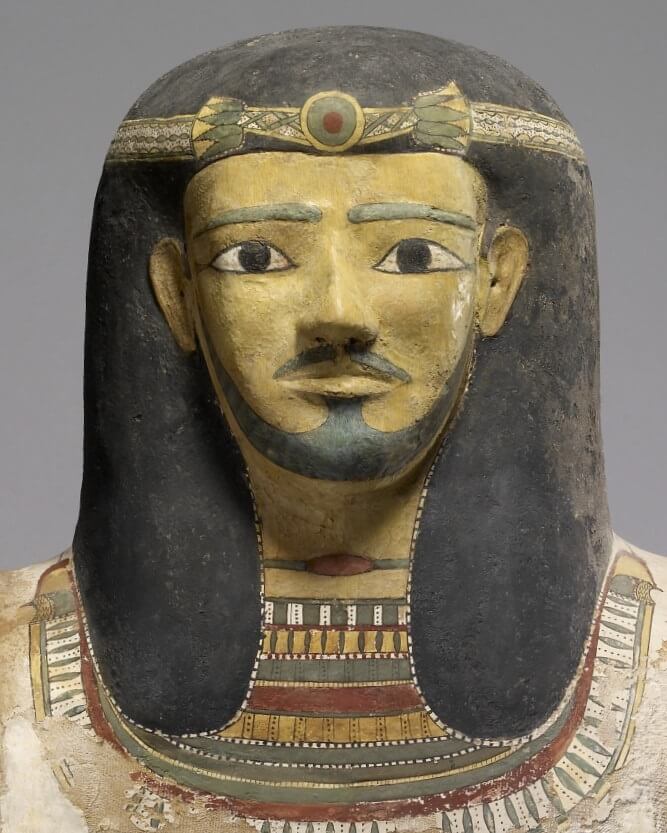Bearded High Official

Middle Kingdom, 11th-12th Dynasty, c. 2000-1980 B.C.
Asyut Necropolis, Upper Egypt.
The Walters Art Museum. 78.4
A cartonnage mummy mask belonging to a High Official found in the Asyut Necropolis of Upper Egypt. The mummy dates from the 11th-12th Dynasty of the Middle Kingdom, c. 2000-1980 B.C. The mask is now on display at The Walters Art Museum. 78.4
Another mummy mask with a similar bearded style was also discovered in Asyut. This one however, has a upper torso remaining. Although it is believed generally that Egyptians were clean-shaven, archaeological evidence is somewhat altering that view as royal mummies with hair have been discovered, and depictions of men with beards and moustaches have also been found. Although that is not to say Egyptians were not usually clean-shaven.
It is known that the priesthood were very particular about cleanliness, removing facial and hair upon the head. However, it must be noted that the idea of an entirely clean shaven king is not entirely true; alsoOld Kingdom kings have been depicted with pencil moustaches, and these two Middle Kingdom depictions of bearded men do suggest that a lack of facial hair was not absolute. A depiction of New Kingdom, 19th Dynasty King, Seti I, has been discovered showing the king with a stubbled face, which has been suggested to show the king in mourning.
The ostracon of Seti I seen below is quite a rarity to behold, as a stubbled faced king is a rather peculiar sight in Ancient Egyptian art. Due to the unusualness of the king being depicted with such natural beard growth rather than the famous Egyptian false beard, it is safe to presume this was maybe used as a practice drawing by a royal artisan. As previously mentioned, historians suggest the beard is possibly a sign of mourning, growing out a beard is still common practices for mourning in varied cultures around the world until this very day.







